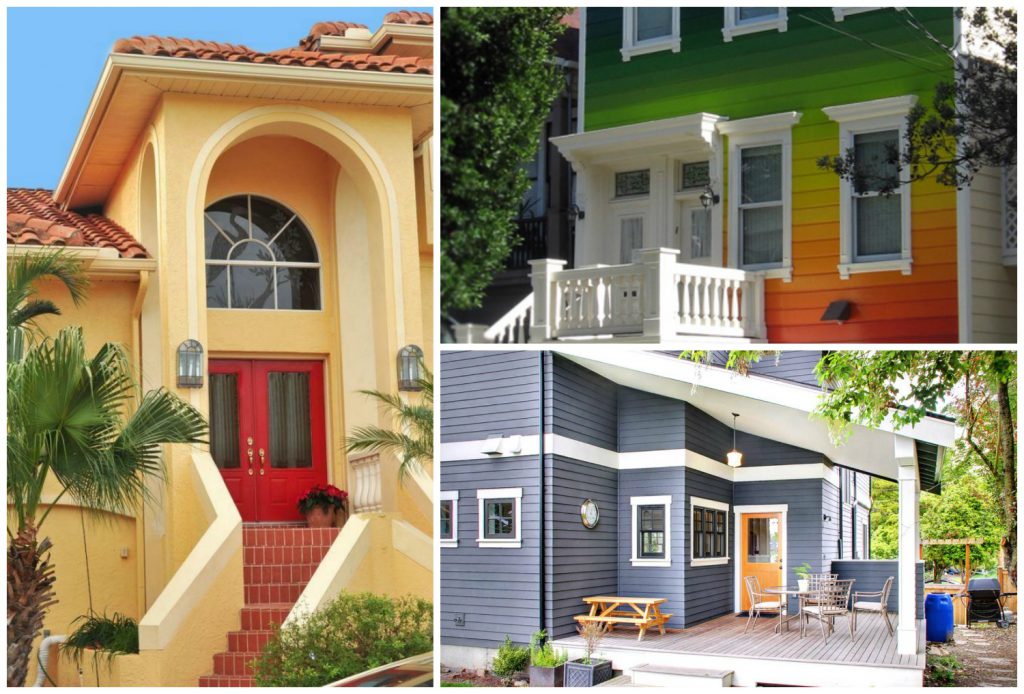The Principles of Using Colors in Exterior Remodeling
 Finally, it is perfect time for spring yarn clean-up. The winter is far behind us, and the hot summer days are not yet here. After you are done with pruning, shoveling, fixing, and mowing, why not enhance your home’s curb appeal with some inexpensive remodeling; painting? By adding color to your exterior, you can cheaply and easily transform your home from a haunted house to a lavish mansion. And not only that. Paints and Stains can protect the exterior surfaces from the elements, too.
Finally, it is perfect time for spring yarn clean-up. The winter is far behind us, and the hot summer days are not yet here. After you are done with pruning, shoveling, fixing, and mowing, why not enhance your home’s curb appeal with some inexpensive remodeling; painting? By adding color to your exterior, you can cheaply and easily transform your home from a haunted house to a lavish mansion. And not only that. Paints and Stains can protect the exterior surfaces from the elements, too.
When it comes to choosing the right color, exterior design does not differ that much from interior, as long as you follow some simple rules and principles. If you have not done it before, these tips will help you achieve the perfect outcome you are looking for.
Keep It Simple
Exterior designers all suggest sticking to two to three colors for exterior walls: one for the body, one for the trim, and one for smaller elements, like shutters, overhangs, or fascia. Better yet, try to stick to two to three shades of one color that are a few shades apart. This way, it does not matter whether you choose the darker or the lighter shade for the body, because the contrast will not be too sharp anyway. Larger homes, like Victorian-style, can pull off even more colorful combinations, but a single-story home looks best with just two hues.

Forget the Remodeling Trends
Choosing the paint for your facade is not like choosing a new dress for the season. While the dress will be worn for a few months, you will most probably have to look at that facade for the next 5 to 10 years. That is why guiding yourself by the latest fashion trends is probably not the greatest idea. As dull as it may sound, understated and neutral shades usually turn out to be the best choice, because they easily combine with other colors and they are always ‘trendy’.

Take a Look Around
So you should stick to two to three neutral shades. This still does not narrow your choices too much. Where do you start then? Well, start from the nature. One basic rule is that your house should blend in with its surroundings. Look at the colors of the trees in your street, or the mountain peaks in the background. Steal from Mother Nature’s color palette. Also, pay attention to fixed elements, such as roof, and apply the simple principles of mixing and matching colors. If your roof is in the cool palette, pick a cool paint for the walls, as well.
Express Yourself with Details
You might ask yourself where your personal touch is in such a carefully selected palette. Well, it is in the details. Vibrant and crazy hues are not at all forbidden in the exterior design, they are just reserved for smaller surfaces, like front doors or mailbox. You can also add decorative concrete for both functionality and aesthetics or introduce colorfulness with decorative flowers and plants.

Hide the Flaws with a Smart Choice
Besides the aesthetics, color can also play a functional role. If picked and applied properly, it can hide any flaws your house might have. To make your two-story home appear shorter, go with a darker shade on the top story and a lighter one on the bottom. If you want to draw the attention away from an ugly garage door, you should not paint it in a fluorescent color. Colors can play tricks on our eyes, so try to use this fact, especially if you plan on selling your home in the future.
What color is your home?